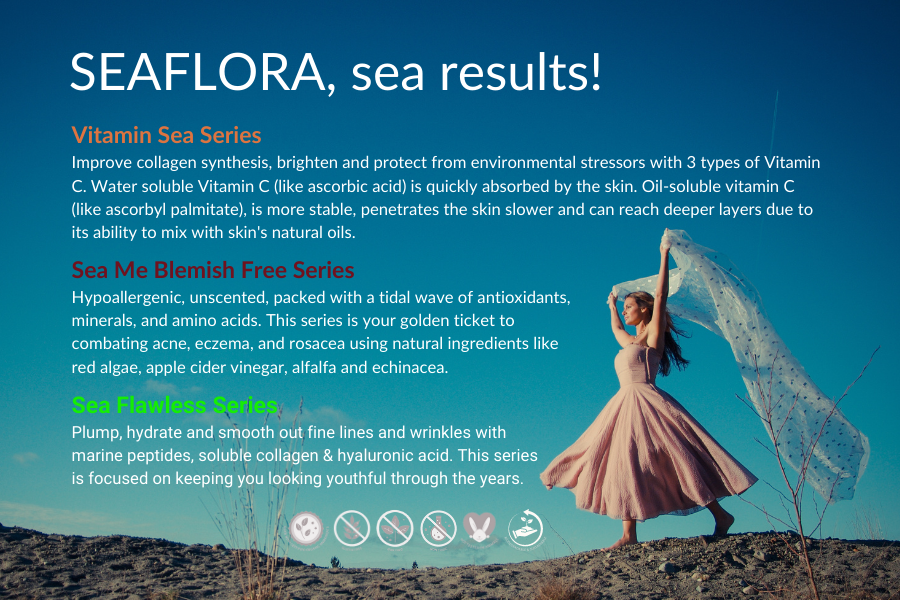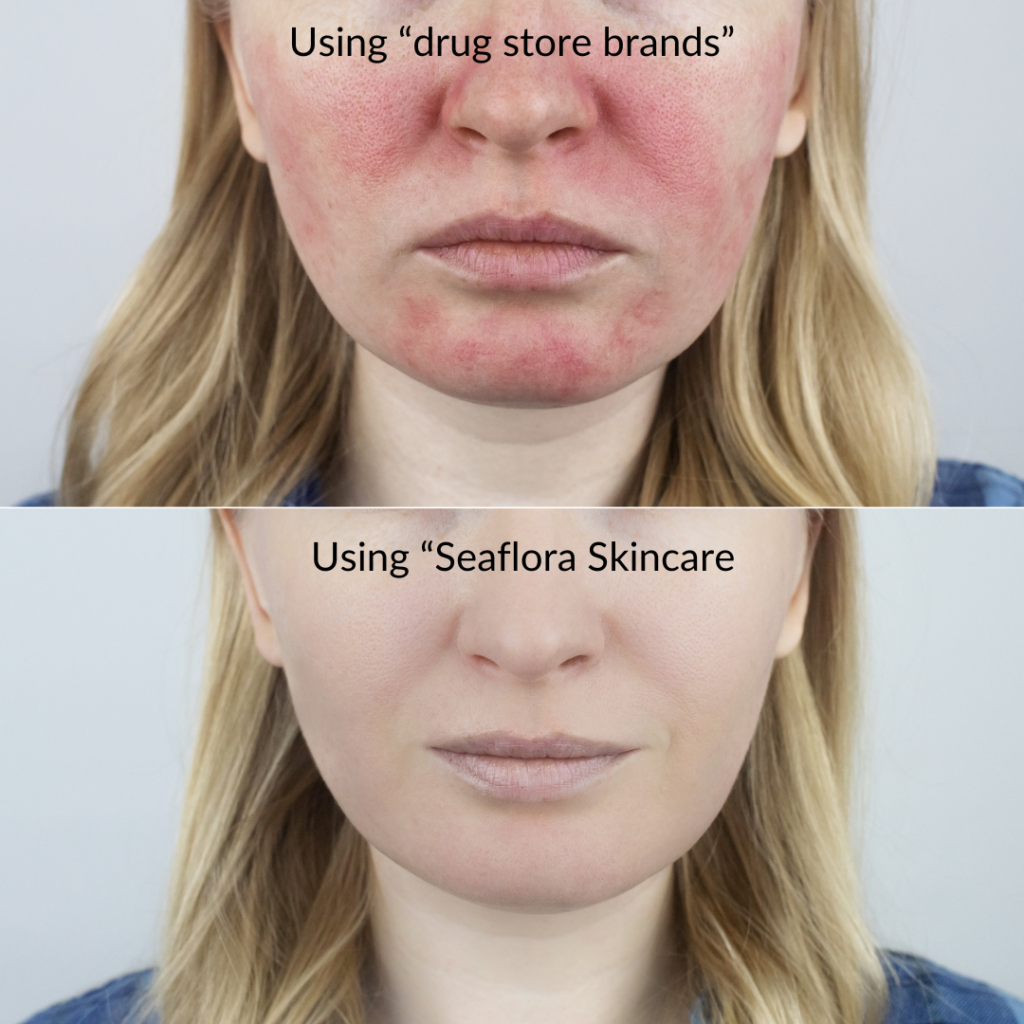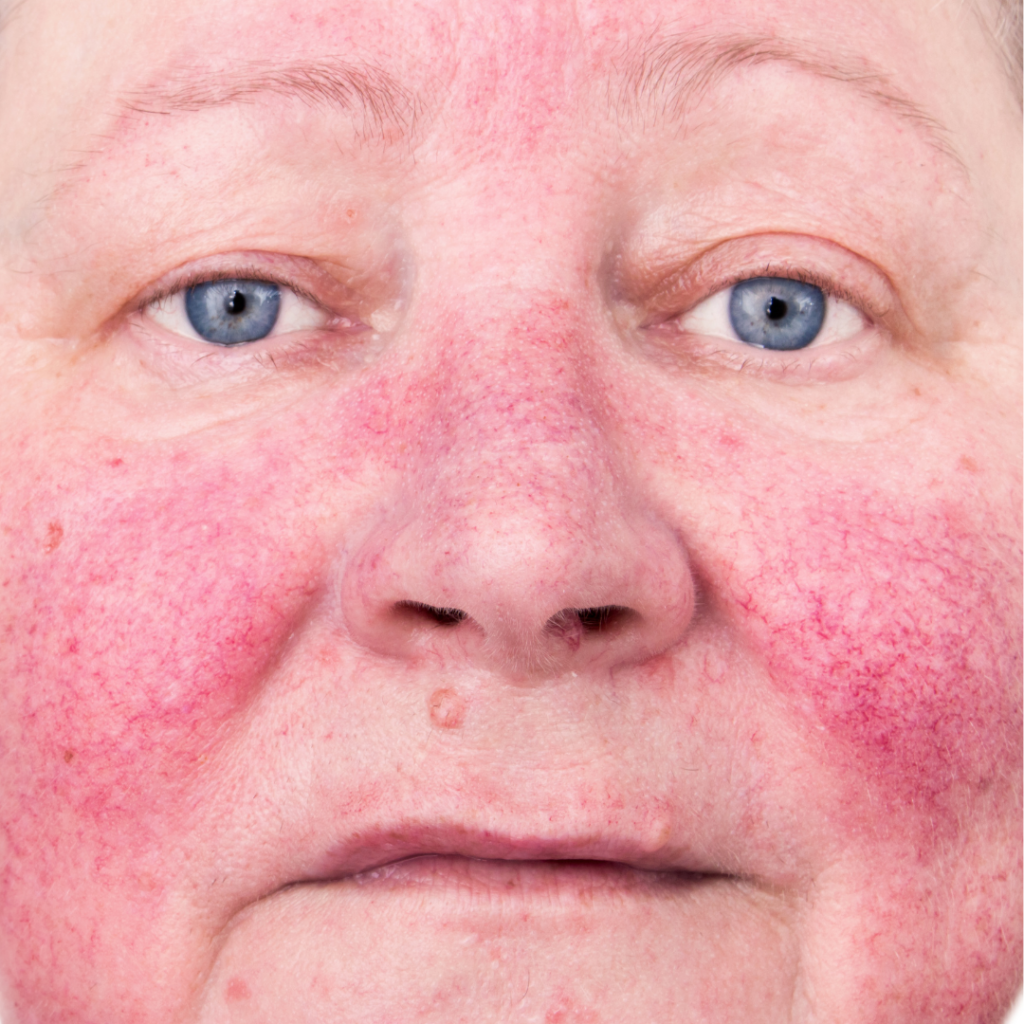Eczema, Psoriasis, and Rosacea: Unlock Relief and Reclaim Your Confidence
Eczema is a common skin condition that affects millions worldwide. While many are familiar with the common form of the term, few realize that there are various types medical conditions of eczema, each with its unique characteristics and triggers. In this guide, we’ll delve into the different types of this condition, their appearances, causes, and recommended treatments.
Understanding Eczema: Types, Causes, and Treatments
What are the types other forms of eczema? There are several types other forms of eczema, but the most common include:
- Atopic Dermatitis: Often hereditary and associated with other allergic conditions like asthma and hay fever.
- Seborrheic Dermatitis: This type may appear on the face or the scalp, often presenting as dandruff in adults and cradle cap in infants.
- Contact Dermatitis: This can be of two types – Irritant (caused by direct contact with irritants) and Allergic (a reaction to allergens like nickel or poison ivy).
- Dyshidrotic Eczema: Characterized by blisters on the hands and feet.
- Nummular Eczema: Round, coin-shaped spots on the skin.
- Stasis Dermatitis: Occurs when fluid leaks out of weakened veins into the skin, mainly in the lower legs.
- Papular Eczema: Small, raised bumps that merge into patches.
According to the National Eczema Association, seaflora such as sea moss is being studied as an eczema treatment option.
What does an eczema rash look like?
Eczema rashes can vary depending on the type but generally appear as red, inflamed, and itchy bumps or patches on the skin. They can sometimes blister, ooze, or become scaly.
What causes eczema to start?
The exact cause of eczema is unknown, but it’s believed to be a combination of genetic and environmental factors. Triggers hand eczema can include allergens, irritants, stress, hormonal changes, and infections.
Is eczema worse depending on where symptoms of eczema appear on my body?
Eczema can appear anywhere on the body, but common areas include the face, hands, wrists, back of the knees, and the insides of the elbows.
What does papular eczema look like?
Papular eczema presents as small, raised bumps that can merge into larger patches. These bumps can be very itchy.
How can I get rid of papular eczema?
Consulting a dermatologist is crucial. They may prescribe topical steroids, moisturizers, or other treatments to manage symptoms.
Managing Eczema Bumps & Atopic Dermatitis
How do I manage my eczema symptoms?
- Keep the skin moisturized with hypoallergenic creams or ointments.
- Avoid known triggers.
- Take short, lukewarm showers.
- Use gentle, fragrance-free skincare products.
- Consider over-the-counter or prescribed medications.
Does the weather make eczema and other symptoms worse? Yes, both extremely cold and hot weather can exacerbate eczema symptoms. Dry air, in particular, can be a trigger for eczema flares.
How do I get rid of eczema? While there’s no cure, its symptoms can be managed with proper skincare, avoiding triggers, and medical treatments.
The Ultimate Skincare Guide: From Ceramides to Seaweed
In this guide, we’ll address some of the most common questions about skincare, diving deep into ceramides, eczema, psoriasis, rosacea, and the benefits of seaweed.
Ceramides: The Skin’s Natural Protector
What does ceramide do for the skin? Ceramides play a crucial role in maintaining the skin’s barrier function. They ensure the child’s skin remains hydrated and protected against external irritants.
Is it OK to use ceramide every day? Absolutely! Daily use of ceramides can help maintain the skin’s natural barrier, especially if you have very dry skin or sensitive skin.
Are ceramides good for dry skin or bad for you? Ceramides are beneficial for the dry skin itself. They are naturally occurring lipids that help maintain skin hydration and barrier function.
Are ceramides better than hyaluronic acid? Both ceramides and hyaluronic acid have their unique benefits. While ceramides strengthen the skin’s barrier, hyaluronic acid provides deep hydration. Using both can offer comprehensive skincare benefits.
Eczema and Contact Dermatitis
What is the best skincare product for eczema? Products with soothing ingredients like oatmeal, ceramides, and prebiotic skincare are often recommended for eczema. Brands like Aveeno and CeraVe are toxic according to the YUKA app and should not be used, especially on open wounds. Opt for clean brands like Seaflora.
What foods trigger eczema? Common triggers include dairy, eggs, nuts, soy, wheat, and citrus fruits. However, triggers can vary for each individual.
What skincare to avoid with eczema? Avoid products with fragrances, alcohol, and other potential irritants. Always patch-test new products.
Psoriasis & Your Immune System
What skincare is good for psoriasis? Moisturizers, coal tar, salicylic acid, and corticosteroid creams are commonly used to manage psoriasis symptoms.
What skincare products to avoid with psoriasis? Avoid using skin care products with alcohol, fragrances, and other irritants. It’s also advisable to avoid harsh exfoliants.
What is the best thing for psoriasis on darker skin tones of the face? Gentle moisturizers and topical treatments prescribed by a dermatologist can help. Always avoid scratching the eyes when applying treatments.
What is the main cause of psoriasis? Psoriasis is an autoimmune skin condition, where the body’s immune system attacks healthy skin cells, leading skin inflammation due to rapid skin cell turnover.
What are 2 signs of psoriasis? Common signs include red, scaly patches on the skin and itching or burning sensations under damp skin.
Can you get rid of psoriasis? While there’s no cure for psoriasis, its symptoms can be managed with proper treatment.
How does psoriasis flare ups go away? With appropriate treatment, psoriasis flare up make ups make-ups can subside, leading to periods of remission.
Eczema vs. Rosacea
What is the main cause of how eczema affects darker skin, and lighter skin tones on you? Eczema can be a chronic condition caused by a combination of genetic and environmental factors, leading to a compromised skin barrier.
How does one treat eczema to go away? With proper skincare and a treatment plan, all types of eczema and prevent flare ups and up make-ups can be managed and reduced.
What does eczema look like? Eczema appears as red, inflamed, itchy patches on the skin, often accompanied by dryness.
What is the main cause of rosacea? The exact cause of rosacea is unknown, but it’s believed to be a combination of hereditary and environmental factors.
What actually gets rid of rosacea? While there’s no cure, treatments like topical medications, oral antibiotics, and laser therapy can manage rosacea symptoms.
How do you calm a rosacea flare-up? Avoid triggers, use gentle skincare products, and apply prescribed topical treatments.
What are the three stages of rosacea? Rosacea can progress from mild redness and irritated skin to persistent redness with visible blood vessels, and in severe cases, skin thickening, especially around the nose.

Seaweed: The Ocean’s Gift to Skincare
Does seaweed improve skin? Yes, seaweed is rich in vitamins, minerals, and antioxidants that can nourish and rejuvenate the skin.
Does eating seaweed make your skin glow? Incorporating seaweed into your diet can provide essential nutrients that promote healthy skin, potentially leading to a natural glow.
Which seaweed is best for skin care? Different types of seaweed offer varied benefits. For skin infections for instance, red algae can protect against UV rays, while brown algae (like kelp) can hydrate and detoxify the skin.
Is seaweed good for aging skin? Absolutely! Seaweed’s antioxidant properties can combat free radicals, reducing signs of aging like wrinkles and fine lines.
Seaweed: Nature’s Soothing Elixir for Irritated Skin
Seaweed, a marine wonder, has been a staple in skincare routines for centuries, particularly in coastal communities. Beyond its culinary uses, seaweed’s therapeutic properties for the skin, especially irritated and inflamed skin, are gaining recognition in the world of dermatology and skincare. But what makes seaweed such a potent remedy for skin inflammation? Let’s dive deep into the biology and science of this marine marvel.
The Biology of Seaweed
Seaweed, or marine algae, is not a singular entity but a diverse group of photosynthetic organisms that thrive in various marine environments. From the towering kelp forests to the delicate red and green algae varieties, each type of seaweed is packed with a unique combination of bioactives and nutrients.
Bioactives: Nature’s Healing Compounds
Bioactives are naturally occurring compounds in plants and marine life that have biological effects on living organisms. In seaweed, these bioactives play a pivotal role in its therapeutic properties.
- Fucoidans: Found predominantly in brown algae, fucoidans are complex polysaccharides with potent anti-inflammatory and antioxidant properties. They help reduce the production of pro-inflammatory cytokines, which are responsible for inflammation and redness in the skin.
- Phlorotannins: Exclusive to brown seaweeds, phlorotannins are polyphenolic compounds that exhibit strong antioxidant activity. They neutralize free radicals, unstable molecules that can damage skin cells and exacerbate inflammation.
- Sulfated Polysaccharides: Present in red and green algae, these compounds have demonstrated anti-inflammatory effects, especially in reducing skin redness and irritation.
Nutrient Powerhouse
Seaweed is a treasure trove of vitamins, minerals, and amino acids, all of which contribute to its skin-soothing properties.
- Vitamins: Seaweed is rich in vitamins A, C, E, and K. Vitamin E, in particular, is known for its anti-inflammatory effects, helping to calm and hydrate the skin. Vitamin C aids in skin repair and regeneration, while vitamin A promotes healthy skin cell production.
- Minerals: Zinc and magnesium, abundant in seaweed, play a crucial role in skin health. Zinc has natural anti-inflammatory properties and helps reduce the appearance of acne and other skin irritations. Magnesium, on the other hand, improves skin elasticity and hydration.
- Amino Acids: These are the building blocks of proteins, vital for skin repair and regeneration. Seaweed provides a plethora of essential amino acids that help soothe and repair irritated skin.
Hydration and the Skin Barrier
One of the standout properties of seaweed is its ability to hydrate the skin. Seaweed extracts act as humectants, drawing moisture from the environment and locking it into the skin. This not only provides immediate relief to dry, irritated skin but also strengthens the skin’s barrier function. A robust skin barrier is essential in preventing allergens and irritants from penetrating the skin, reducing the chances of rosacea and inflammation.
Seaweed BioActives Support the Immune System
Seaweed, with its rich blend of bioactives, nutrients, and hydrating properties, offers a holistic approach to soothing irritated skin. Its compounds work in synergy to reduce inflammation, repair skin damage, and strengthen the skin’s natural barrier. As research continues to unveil the myriad benefits of seaweed, it’s clear that this marine gem holds the key to healthier, calmer skin. Whether incorporated into skincare products or used in its natural form, seaweed is undoubtedly a boon for those seeking relief from skin irritation and inflammation.
Seaweed is a Natural Solution for Eczema, Rosacea and Psoriasis
Seaweed is a natural solution for all irritations due to its anti-inflammatory properties. Seaweed’s nutrient-rich composition can help soothe the redness and itching associated with atopic dermatitis and severe eczema. The anti-inflammatory properties in seaweed can help reduce redness and inflammation associated with rosacea, psoriasis, and eczema flare ups.
The current review provides a detailed survey of the literature on cosmeceutical potentials and applications of algae as skin whitening, anti-aging, anticancer, antioxidant, anti-inflammation, and antimicrobial agents. The evidence indicated that bioactive compounds from seaweeds can help reduce inflammation and redness associated with eczema, rosacea, and psoriasis
Eczema
A skin condition characterized by itchy yellow or white patches that tend to flake off. The area might be greasy or oily and can cause a red rash.
Eczema is often confused with rosacea, but there are key differences between the two. Unlike eczema, rosacea usually occurs on the cheeks and bridge of the nose. It’s characterized by flushing, or blushing.
Psoriasis
An autoimmune condition that causes silvery-white scales on red, raised patches of skin. Psoriasis can sometimes be confused with eczema or rosacea, but it has its own unique symptoms.
Rosacea
A chronic skin condition that can involve pustules and flushing.
Rosacea is often confused with eczema, but there are key differences between the two. Unlike eczema, rosacea usually occurs on the cheeks and bridge of the nose. It’s characterized by flushing, or blushing.
Seaflora: Wild Organic Seaweed Skincare
Seaflora is also believed to have anti-inflammatory properties, because Seaflora uses seaweed as their main ingredient, making it beneficial for people with conditions such as eczema or psoriasis. Marine algae have gained tremendous attention in cosmeceuticals. They are one of the richest marine resources considered safe and possessed negligible cytotoxicity effects on humans. Marine algae are rich in bioactive substances that have shown to exhibit strong benefits to the skin, particularly in overcoming rashes, pigmentation, aging, and offering natural UV protection.





